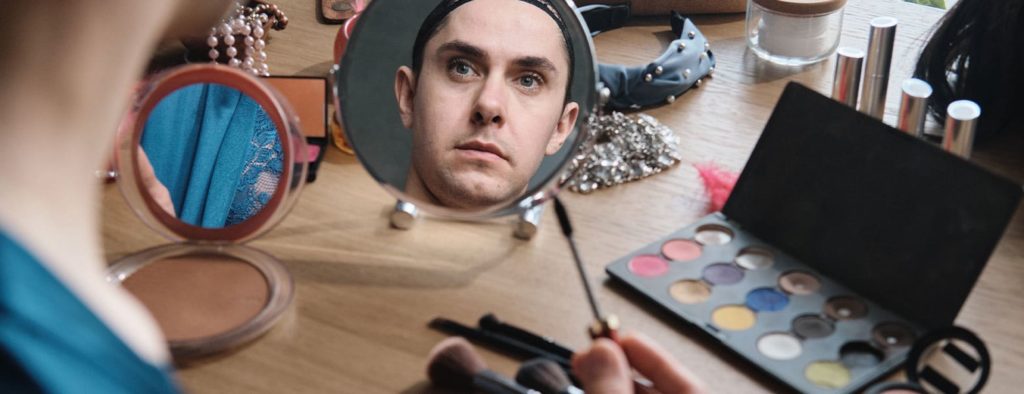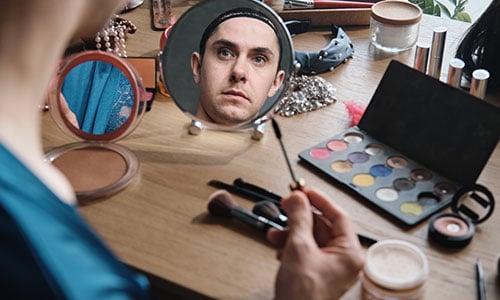
Gender Dysphoria isn’t a new phenomenon. It’s been present in cultures all over the world for decades. But as the world becomes ever more progressive and accepting of the full gamut of mental health conditions, it’s gained far more widespread attention in the last five years. Many more parents are faced with the dilemma of having their child relate to them that they don’t want to be in the body that they’re in now. They don’t feel right and exhibit a strong pull towards the opposite gender in terms of activities, clothing, attitude and other markers of personality. But it’s not just in children, but adults too who maybe didn’t have the proper support system of social acceptance available to allow them the permission to speak out about their desires to change. There are undoubtedly many happy endings for those who transition and finally feel at one with themselves. But it remains a huge life choice and one which some people go on to say that they’ve since regretted in the aftermath.
What is Gender Dysphoria?
To understand whether or not you’re suffering from gender dysphoria, you first need to have a clear idea of what it looks like. Gender dysphoria is not a simple longing or intermittent want to be of a different gender. It is an acute form of psychological distress that results from a mismatch in one’s sex at birth and gender identity. Although symptoms often begin to manifest during early childhood, some people don’t experience feelings of dis-ease about their gender until they reach puberty.
Symptoms
The main overarching symptom of gender dysphoria is the psychological discomfort or distress the comes from being assigned the wrong gender at birth. However, this can be unpacked to present a set of traits that characterise the experience which includes:
- An overwhelming desire to not have the primary-physical characteristics of their assigned birth gender.
- A strongly expressed desire to be treated as the opposite gender.
- The insistence that they are the opposite gender to which they were born
- Preference for cross-sex roles
- Strong rejection of toys, games, clothes and anything else related to their birth gender.
Important Facts to Remember About Gender Dysphoria
One of the main pitfalls that can result in people of all ages misplacing or misinterpreting their confusion about their gender is when they bring other related aspects of gender and sexual orientation into their thought-process. These may appear to provide confirmation of the need to transition away from one’s current gender. But they are, in fact, separate issues of their own.
Gender Identity vs Sexual Orientation
The classic case of confusion regarding gender identity comes from conflating it with sexuality. It’s important to remember when trying to discern where you sit with your identity that it relates to your sex only. Your sexual orientation is completely different and relates to your physical, emotional and romantic attraction to other people.
Gender Dysphoria vs Gender Nonconformity
It’s also important to note that gender nonconformity is not the same as gender dysphoria. The key difference being that nonconformity is a conscious rejection of expected standards and social etiquette. Gender dysphoria is something that is innate and cannot be changed no matter how hard you might try. Nonconformity is a choice.
Gender identity vs Gender Expression
This ties into the idea of nonconformity but is worth mentioning in its own right. Gender expression refers to the way in which people project themselves to the world. For example, wearing a dress is considered a feminine expression. But if a male chose to do so, it would not necessarily be indicative of a mental disorder by itself, but simply a choice.
When is it Not Gender Dysphoria?
Part of the problem of accurately diagnosing gender dysphoria in this current climate of acceptance is the adoption of the condition within peer groups. This is an issue specific only to children. But there have been multiple observed cases in which one child – declaring they don’t want to be in their assigned gender any more – causes an entire group of friends to follow to suit in a manner of conformity and fear of missing out – or in this case rather a fear of being left behind. Statically speaking, gender dysphoria is an exceedingly rare condition, affecting only between 0.005 – 0.014% of males and 0.002 – 0.003% of female – according to the DSM-5. So for an entire group of friends to discover at the same time they all have gender dysphoria is beyond a statistical anomaly and more likely a case of peer-related conformity.
Diagnosis
Gender dysphoria is and has been an officially recognised mental disorder for some time now. But it’s has undergone some significant changes in the way it’s portrayed in recent additions of the DSM, with the name being amended from gender identity disorder to the current moniker of gender dysphoria – in an attempt to de-stigmatise the condition. Whereas it was previously focused on being a disorder relating to identity, the focus has now shifted to one of discomfort and distress caused by the condition.
In Adults and Adolescents
For there to be a diagnosis of gender dysphoria in an adult or adolescent, there needs to be an extended period of clinical distress that lead to an impairment in one’s social life, work, and other areas which are vital for the upkeep of good mental health. The feelings must last for at least 6 months and include two of the following:
- A significant dissociation from one’s primary and secondary gender-based characteristics
- A strong desire to get rid of/escape from primary and secondary gender characteristics
- An unshakable desire to have the characteristics of their ‘experienced gender’
- An insistence that they be treated as their experienced gender
- A belied they have the behaviours, feelings, and characteristics of their experienced gender
In Children
As far as children are concerned, as we’ve already mentioned it’s not uncommon for children to display gender nonconformity. So it’s important to distinguish between what constitutes typical childhood behaviours and what may actually be a case of gender dysphoria. In the same with adults, children must experience significant impairments in their functioning for at least six months and must display at least six of the following symptoms
- An insistence that they are of the opposite gender
- Preferring to engage in fantasy-play taking up roles in the opposite gender
- A preference for wearing clothes of the opposite gender
- A preference for toys typically associated with the opposite gender
- Expressing dislike for their physical sexual attributes
- A strong desire to have the sexual attributes of the opposite gender
- Preferring to play with children of the opposite gender












